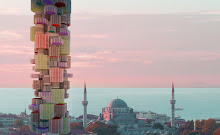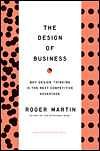Located between Sicily and the African continent, are the Maltese islands. Ruled by the Phoenicians, Carthaginians, Romans, the Byzantines, the French and finally the British until they declared independence in 1964, Malta is a crossroads of many cultures and influences. My sister spent a few days there over the Easter break and here are some of her pictures....

3.27.2008
The Colors of Malta
3.17.2008
Strolling through Griffith Park
Finding ourselves with a free Saturday afternoon, we decided to check out Griffith Park and do a little hiking and a little sight seeing. It is the largest public urban park in the United States. The 4,210 acres of greenery is named after Colonel Griffith J. Griffith, a Welshman who struck (lots and lots) of gold in California and purchased the land in 1882. In 1896, he donated the majority of his land to the city so that it could be a "place of recreation and rest for the masses." As he had requested, the Griffith Observatory was built in 1935 with funds left by Griffith after his death.
 Entrance to the Griffith Observatory
Entrance to the Griffith ObservatoryFans of James Dean may recognize this building as the backdrop in "Rebel without a Cause" (1955)
 The giant telescope within the Observatory...unfortunately, the smog and pollution in Los Angeles hampers the visibility
The giant telescope within the Observatory...unfortunately, the smog and pollution in Los Angeles hampers the visibilityAll in all, it was a good day.
3.12.2008
A Whisper on Wilshire - Renzo Piano's BCAM
I had the fabulous opportunity today to get a tour of the LA County Museum of Art's (LACMA) new addition Broad Contemporary Art Museum (BCAM) on a day when the museum is closed and there were no crowds. (Well except for a small camera crew who were filming a scene for a soap opera).
Generally, I have been rather impressed with the work of Renzo Piano (the Italian architect who was commissioned for this project). His designs tend to be much more sensitive and attuned to the environment and the building's purpose. An old friend of mine who had worked for Renzo Piano in the past, told me that Piano had turned down a lucrative offer to design a skyscraper in Dubai because he felt that type of building was at odds with the climate of Dubai. I respect that. While a graduate student at MIT, I had the good fortune to meet Renzo Piano, albeit briefly. He was preparing to give talk on his work at the architecture school and was standing outside the auditorium alone, rehearsing his speech. I went up to him with a book of his work in hand and sheepishly asked if he would sign my book. He looked up from his notes and smiled and said in accented English, "Maybe you would like to wait until after my talk, maybe it is no good and you will not want me to sign your book then...." As an architecture groupie, as my friends then called me, it was definitely not the response I would expect from a world renowned architect,especially given the egos that float about out there. It is a moment I remember fondly.
Needless to say, I was curious to finally see the building that was being written in newspapers globally.
 The building as seen on Wilshire Boulevard
The building as seen on Wilshire Boulevard Chris Burden's Urban Light (150 restored cast iron street lamps)
Chris Burden's Urban Light (150 restored cast iron street lamps)The city of Los Angeles is so incredibly spread out that you can drive for miles and miles and see nothing but the never ending architecture of strip malls and bland mid-rise buildings, all of which are mind numbingly similar and unremarkable. So on such a significant artery as Wilshire Boulevard is in Los Angeles, I think there was a tremendous opportunity to make some sort of significant landmark or statement. In a car speeding past on Wilshire Boulevard, you might not even notice the building, if not for the huge hanging banners. And while there are unfortunately few pedestrians in Los Angeles, the facade on its own also does not encourage foot traffic or arouse curiosity. I definitely think that this was a missed opportunity.
Additionally, the careful studies of light that made the Menil Collection in Houston so successful seems somewhat lacking in this building. (Granted the Menil Collection is only one story building). The first and second floors of BCAM have limited if any natural light. And while this perhaps allows the art to be more the focus, the space is not as uplifting and airy as even the more recent addition to the Morgan Library in New York City tends to be.
 A worker cleaning the glass ceiling on the third floor of BCAM
A worker cleaning the glass ceiling on the third floor of BCAM(Notice the louvers that filter the light into the space)
I would nevertheless, recommend a visit if you are in Los Angeles. Not the most astute connoisseur of contemporary art, I enjoyed the art collection tremendously. Perhaps unknowingly that is a success of the building.
3.06.2008
Aaahhh! Stop the Insanity! Dubai Builds Another Artificial Island - Waterfront City
Back in the day, when Dubai was still a little fledgling desert city and the ruling tribe was envisioning their plans for Dubai's future growth, the leaders and developers of Dubai turned to other successful global cities in the world such as Hong Kong, Singapore and New York City as examples. Now in 2008, thanks to Dutch architect Rem Koolhaas, they no longer have to emulate New York City, he is designing their very own island of Manhattan.
I only have one thing to say.... Aaahhhhhhh!!!
Has the sun and heat in Dubai melted his brain too? As a Pritzker winning architect he should know better. Perhaps he is being blinded by his huge ego. On Nakheel's website (the developer) - they claim that they are "transforming 1.4 billion square feet of empty desert and sea into an international community...twice the size of the Hong Kong island." Waterfront City, as this project is known, will be located in Jebel Ali, right next to one of the three giant Palm Islands. Perhaps this a test to see how many outrageously large man-made islands they can build in the Persian Gulf until they completely destroy the entire eco-system?
According to the New York Times article by Nicolai Ouroussoff, where I first read about this project, the main part of this development will be an island that will be divided into 25 blocks. Each block will be densely packed with rows of towers of different shapes and sizes. But just so that no-one mistakes it as an exact slice of Manhattan, Koolhaas has proposed two outlandish buildings. The first is an 82-story tower in the same shape as the minaret of the Great Mosque of al-Mutawakkil in Samarra, Iraq. The second, brings me back to my architecture history classes long, long ago - a 44-story sphere much like those designed by Etienne-Louis Boullee in the 18th century. (See below).
 Interior shot of the sphere
Interior shot of the sphereMy frustration however, is not just with the leadership of Dubai, it is also with the architect. Is there no obligation on the part of the architect - who is trained to know better, to advise the client into developing more thoughtful, environmentally and socially sensitive projects? Or does it always come down to big egos and big money?
















































